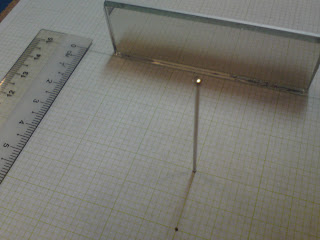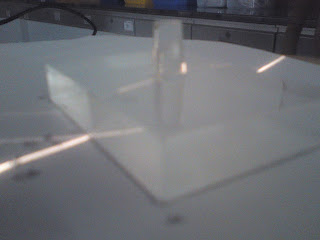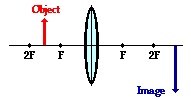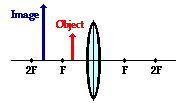Reflection
As light falls on a surface, it will be reflected, this is a ray diagram. (image here)
As the light falls on a regular surface, it would be specular relfection.
As the light falls on a irregular surface, it would be diffused reflection.
The Ray Diagram
In the Ray Diagram, there is the "tedious way" and the "cheat method"
In the correct way, we have to measure every angle of the reflection before we can draw the virtual rays and the distance of the object from mirror and image from mirror. The human eye perceive light rays as straight and come from behind the mirror, thus it is called a "Virtual" image. Through this method, I can understand the reflection, however, if you were to do this for exam you might not have enough time thus...
(image here)
2P08
Practicals
2P07
- Angle of incidence, is equal to angle of reflection
- When drawing of concave mirror or convex mirror, always draw the tangent on the place of the incidence of light.
- When drawing lines for reflected ray, use two arrows on any two points of line

- Words to describe the image are real, virtual, diminished, same size, magnified, upright, inverted, laterally inverted
- When asking you to draw a reflection of word, always try to draw exactly the same
- Convex Mirror: stood close, image upright, diminished; stood far image upright, diminished
- Concave Mirror: stood close, virtual image upright, further virtual image and inverted.
2P09
2P10
- Semicircular glass block, the light ray enter from curved side
- Refractive index
- Refractive index for every glass is different
2P11
- 2mm of convex lens is considered as thin
- when the light ray enters the lens, you still have to draw tangent for every ray
- refraction will also occur to every ray when exiting the lens
- light ray does not stop at the focal point
- always do repeats of 3 times for each experiment
Refraction
Always remember this
Remember this too...
* As a light ray travels from an optically less dense to denser medium, it would bend towards the normal
* As a light ray travels from an optically denser to less dense medium, it would bend away from the normal
(image here)
(image here)
Lenses
- Case 1: parallel rays from a distant object u=infinity
- Case 2: the object is located beyond the 2F point
- Case 3: the object is located at the 2F point
- Case 4: the object is located between the 2F point and the focal point (F)
- Case 5: the object is located at the focal point (F)
- Case 6: the object is located in front of the focal point (F)
The terms used in Lenses
- Optical centre
Centre of lens
Principal axis
Focal Point
Horizontal line parallel to horizon, pass through optical centre
Pass through optical centre; meet at point, (parallel)
Focal Length
From the optical centre to focal point (length)
Focal Plane
Same line or plane as focal plane
Reflection
In this topic, many questions i had when i was young and questions that intrigued me had answers. An example was the lens which could cause a picture to be on the screen, this was something that was very interesting, as i also remembered seeing this when i was playing with a lens when i was young. (magnifying glass) This topic also cleared many thoughts, an example when i drink from a cup with a straw, the straw seems to be bended, but this is due to refraction as the light travels from a optically less dense medium to a optically denser medium. The practicals that i did are all very useful and hands-on. I got to try almost all of the theories that we use by having a try of it with our own hands, we could understand the rules/ theory better. This topic is indeed very interesting, I am planning to do more research and reading during my holidays.







































No comments:
Post a Comment